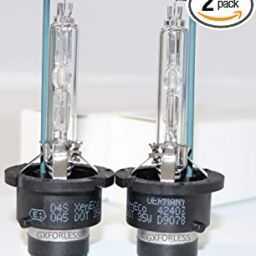Solar Electrical Characteristics
Solar panels (Photovoltaic or PV modules) produce DC, or direct current electricity. This is the same type of electricity that is produced by your car battery or other batteries. The appliances in our homes use a different type of electricity called AC, or alternating current. DC electricity flows in one direction only, while AC electricity changes direction rapidly, offering certain advantages in transmission.
In order to use solar electricity to run normal household devices, you’ll need an solar inverter, which converts DC to AC. A small system to charge batteries or power small electrical devices (like cell phones and personal music players) doesn’t require an inverter, but be sure to use the correct adapters and, if needed, voltage converters or limiters.
A basic primer on electricity will help make all of this clear:
Volt – Unit of electrical potential
Ampere – Rate of Current Flow
Watt – Rate of Energy Supply or Consumption
So now, let’s look at these values in terms of energy and power.
Power is the rate at which energy is supplied – like the speedometer on your car – and this is measured in Watts
Energy is the measure of power over time – like your car’s odometer – and this is measured in watt-hours or killowatt-hours
One of the best examples is your old school incandescent light bulb. If it is rated at 60 watts and you leave the light on for 1 hour, you are using 60 watt-hours of energy (i.e. 60 watts x 1 hour). So consumption can be measured in this formula:
Power (W) x Time (Hrs) = Energy (Watt-hours)
In the car analogy, the odometer counts the quantity of miles traveled. Your electric utility bill shows the number of kilowatt-hours (kWh, or 1,000 Watt-hours) you use per month.
So how does the wattage rating of a solar panel affect the amount of energy the panel produces? Simple– with all else being constant, a higher-wattage solar panel will produce more energy over time than a lower-wattage panel. A 100 Watt solar panel will produce twice as much energy as a 50 Watt solar panel at the same location during the same period of time.
It’s worth mentioning also that solar panels’ wattage output rating is based on what the modules produce under laboratory-controlled conditions, called Standard Test Conditions (STC). A solar panels STC Rating allows solar panels to be compared to each other using the same metric. However, because these rated wattages represent ideal laboratory conditions, it’s likely that the module will produce lower wattage in actual use.
PV modules also have ratings. The rated wattage of a panel is equal to its operating voltage multiplied by its operating current: Watts = Voltage x Amps. The amount of energy in Watt-hours that a panel will produce is a product of the wattage of the panel and the number of hours of full-intensity sunlight, or, that it receives.
For example, a solar panel that outputs 100 Watts for two hours will produce 200 Watt-hours of energy. Isolation values are also tied to STC and are based on location. They can be found in data tables for most locations in the U.S. and the world. The actual number of Watt-hours a panel produces will very likely be less than this theoretical value due to many factors that affect the efficiencies of the system components. There are standard factors used to correct for real-world energy losses, but our present focus is the basic electrical principles.
Voltage and Solar Panels
PV modules have three different voltage ratings that it’s handy to understand.
Nominal Voltage: The nominal voltage of a panel could also be called the “conversational voltage.” When we talk about the voltage of the panels and the other components of the system, we’ll most often use the nominal voltage. Nominal voltage actually refers to the voltage of the battery that the module is best suited to charge; this is a leftover term from the days when solar panels were used only to charge batteries. The actual voltage output of the panel changes as lighting and temperature conditions change, so there’s never one specific voltage at which the panel operates. Nominal voltage allows us, at a glance, to make sure the panel is compatible with a given system.
Voltage at Maximum Power or Vmp: This is the highest voltage the panel can produce while connected to a system and operating at peak efficiency.
Open Circuit Voltage or Voc: This is the maximum voltage that the panel can produce when not connected to an electrical circuit or system. Voc can be measured with a meter directly contacting the panel’s terminals or the ends of its built-in cables.
Current and Solar Panels
Panels also have two different current ratings: (Imp) and (Isc), both listed in Amps. The maximum power current (Imp), is similar to Vmp: it’s the maximum current available when the panel is operating at peak efficiency in a circuit. Similar to Voc, the short circuit current (Isc), is the current measurement your meter would show when in contact with the positive and negative terminals of the panel while not connected to a system or load.
All these electrical characteristics are used to help determine the size of the solar panel system and components. These specifications can be found on the label on each solar panel as well as on manufacturers’ specification sheets.
AUTOPOST by BEDEWY VISIT GAHZLY




